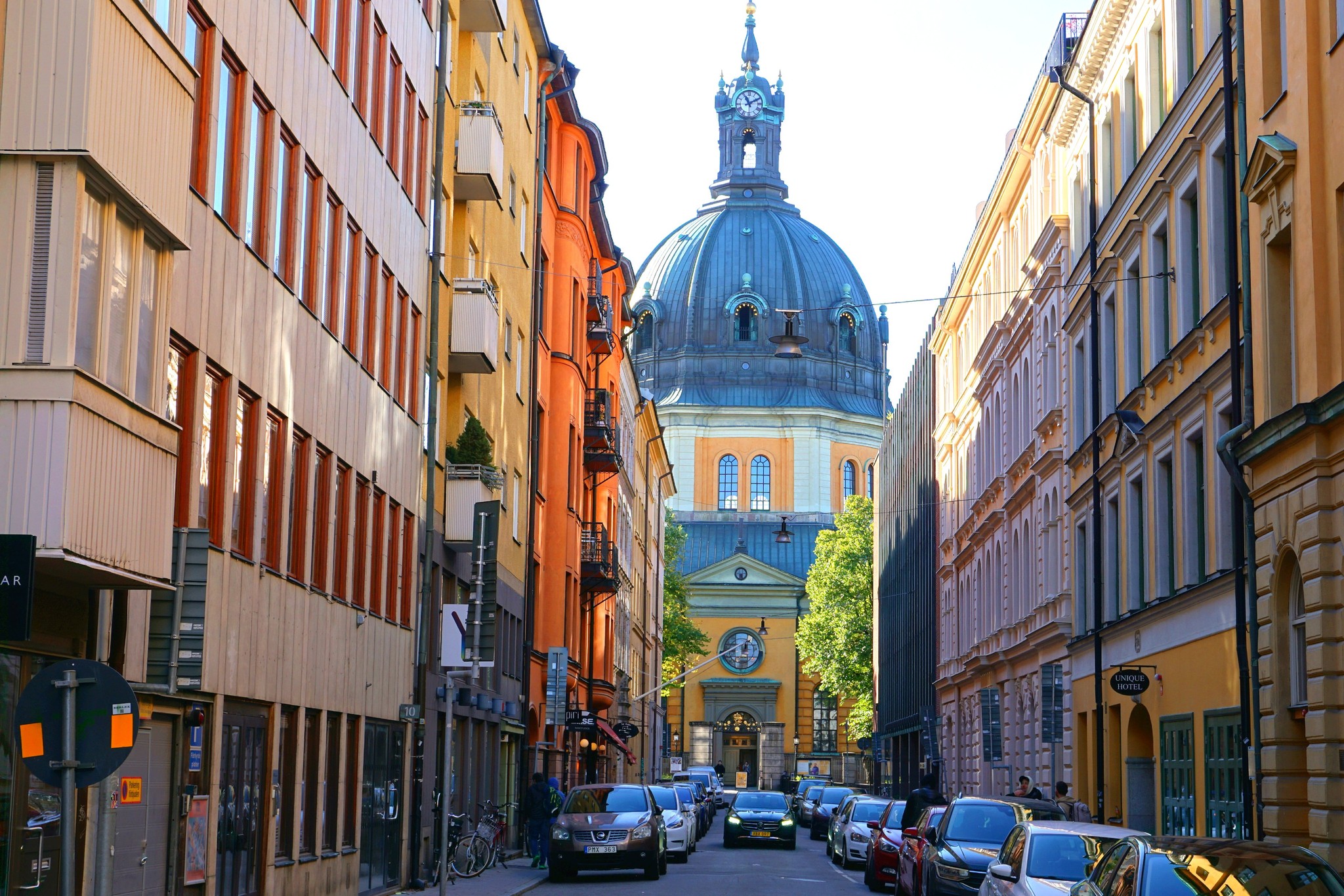
Welcome To Hedvig Eleonora Church and Parish!
The parish was formed initially as a naval parish in 1672. The decision to build the Admiralty Church, later known as Ladugårdsland Church and now called Hedvig Eleonora Church, was made as early as around 1665. Ecclesiastically, Ladugårdslandet originally belonged to Solna and later to Jakob’s Church when it was completed in the 1640s.
The Navy built two wooden churches, but these were not long-term solutions. First, a simple wooden church was built, approximately where the National Museum is located today. Then, the Artillery Church, another wooden church, was built at the Artillery Yard (currently the Army Museum). A third wooden church was also built in Hedvig Eleonora’s churchyard during the construction of the current stone church. It was demolished a year after the stone church was inaugurated in 1737.
50-YEAR CONFLICT HALTED THE CHURCH CONSTRUCTION
In 1669, the foundation for today’s stone church was laid according to the drawings of Jean de la Vallée, but the funds ran out, and construction halted when it reached about two meters in height. This was due to economic problems from strained state finances and disagreements between the navy and the civilian parish formed in 1672. The dispute lasted for 50 years. During the construction period, a third wooden church was erected as a temporary solution in the summer of 1670 and was completed by Christmas of the same year. It was a rectangular church located in the northeastern corner of the churchyard at Storgatan-Artillerigatan. 1672, the wooden church had to be expanded as it was too small. In 1698, the church council wrote to the college in Karlskrona requesting permission to repair the wooden church because the roof beams had rotted. Between 1672 and 1723, Ladugårdslandet was its own naval parish, named the Naval Parish of Ladugårdslandet.
BECAME A CIVIL PARISH IN 1723
In 1723, precisely 300 years ago in 2023, the parish’s connection to the navy, which had moved to Karlskrona in 1680, was severed. This allowed significant financial resources to be allocated, partly thanks to King Frederick I of Sweden. The long-standing issue was finally resolved after half a century by a royal decree on December 11, 1723, ordering the Admiralty Board to transfer all assets to the parish, which would resume the church construction stalled for half a century. This happened a few years later, in 1725 when the construction leadership was entrusted to Göran Josua Adelcrantz.
Hedvig Eleonora Church was eventually completed, and a civil territorial parish, a regular parish with parishioners, came into existence. An unfinished church without the external tower dome was inaugurated in 1737. The wooden church was demolished the following year. Only between 1865 and 1868 was the church’s architecture completed in its current form.
As a naval or military parish, the parish was not territorial in Östermalm, but its members were defined in ways other than residence within the parish.
FROM LADUGÅRDSLAND TO HEDVIG ELEONORA
The title Naval Parish of Ladugårdslandet was too cumbersome to become famous. During the last decades of the 17th century, before the separation from the navy, the church and parish began to be called Ladugårdsland, a name that has been preferred even into the 20th century and is far more known than Hedvig Eleonora, which the church was named upon its inauguration in 1737. The name Hedvig Eleonora probably originated from a promise made by Dowager Queen Hedvig Eleonora at the end of 1687 or the beginning of 1688 to ”be a patroness of said house of God.” On August 19, 1737, King Frederick I gave his ”most gracious consent that it (the church) shall be called Hedvig Eleonora, with the statement, especially as our queen is named Eleonora.” After Hedvig Eleonora parish was expanded to include Djurgården in 1868 and 1870, the district was named Östermalm in 1885, a name that also began to be added to the church. From 1906, when Östermalm was divided into three parishes, Engelbrekt and Oscar, on either side of the mother parish Hedvig Eleonora, the latter name became more commonly used.
THREE-DAY CELEBRATION IN OCTOBER 2023
In 1870, the parish expanded to include all of Djurgården. 1906, the parish was divided into three parts: Hedvig Eleonora, Oscar, and Engelbrekt. This year marks the 300th anniversary of the parish becoming a civil territorial parish, a significant jubilee for the entire Church of Sweden in Östermalm – now three parishes – and worth celebrating over three days!
IMPORTANT DATES FOR HEDVIG ELEONORA CHURCH AND PARISH
1665: Decision made to build a new naval church 1669: Foundation of the church laid 1671: First service held in the temporary wooden church 1672: Naval parish established 1723: Parish becomes fully independent 1725: Church construction resumes 1737: Church inaugurated with a provisional wooden superstructure 1868: Dome inaugurated and the church finally completed after 200 years 1906: Hedvig Eleonora parish divided into three parishes
NOTE:
The only remaining military parish in Sweden is Karlskrona Naval Parish. Although the Church of Sweden has had many non-territorial parishes, only five remain: Karlskrona Naval Parish, German Christinae Parish in Gothenburg, German St. Gertrud Parish in Stockholm, Finnish Parish in Stockholm, and the Royal Court Parish.
OPENING HOURS
The church is open every day from 11.00 to 18.00. There are a plethora of cultural activities going on in the church, as well as masses, meditation, and, of course, all events of life, from baptism to funerals. You are welcome to visit our church and light candles or just sit down on the benches to contemplate and pray.

